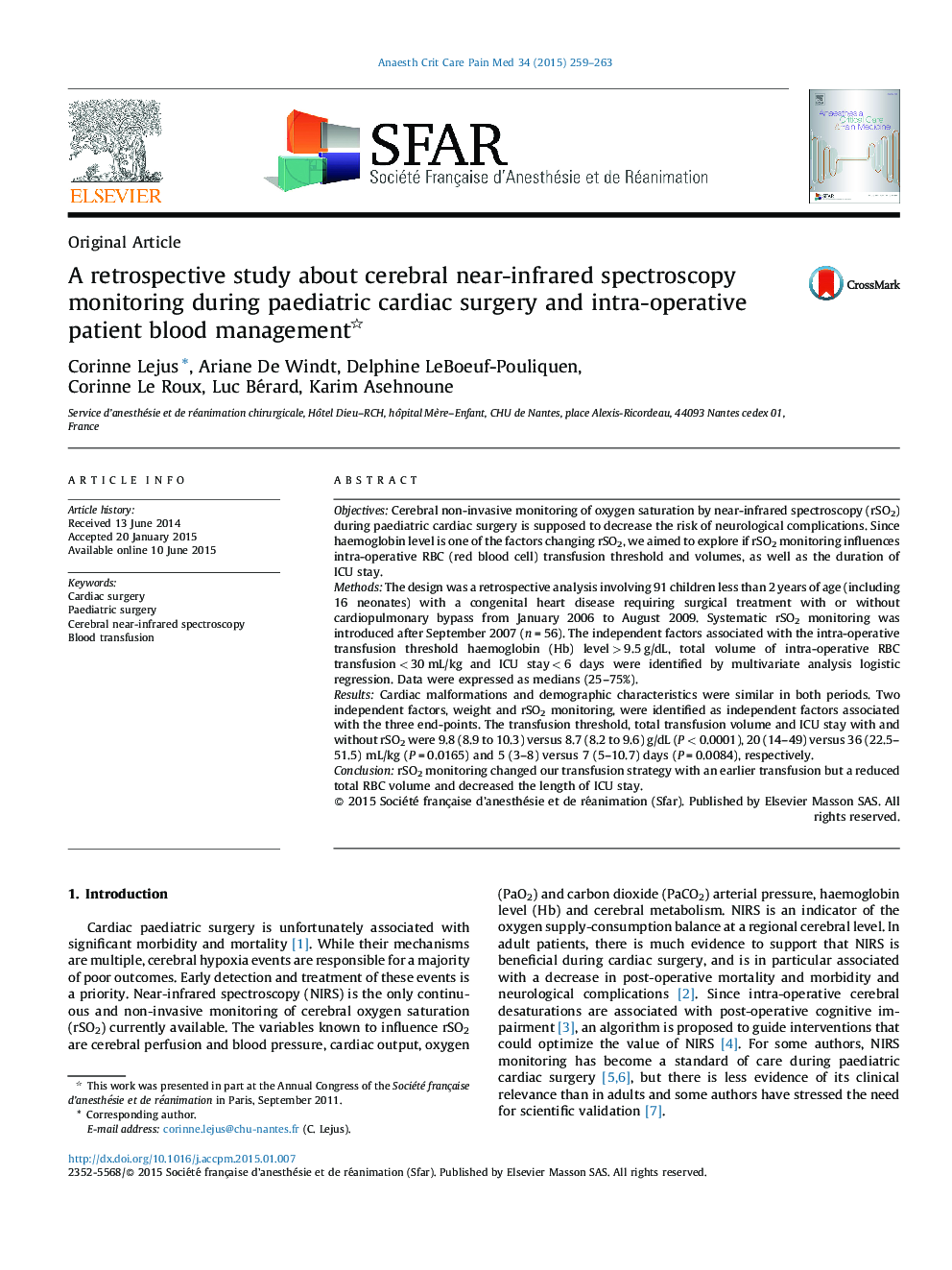| Article ID | Journal | Published Year | Pages | File Type |
|---|---|---|---|---|
| 2741906 | Anaesthesia Critical Care & Pain Medicine | 2015 | 5 Pages |
ObjectivesCerebral non-invasive monitoring of oxygen saturation by near-infrared spectroscopy (rSO2) during paediatric cardiac surgery is supposed to decrease the risk of neurological complications. Since haemoglobin level is one of the factors changing rSO2, we aimed to explore if rSO2 monitoring influences intra-operative RBC (red blood cell) transfusion threshold and volumes, as well as the duration of ICU stay.MethodsThe design was a retrospective analysis involving 91 children less than 2 years of age (including 16 neonates) with a congenital heart disease requiring surgical treatment with or without cardiopulmonary bypass from January 2006 to August 2009. Systematic rSO2 monitoring was introduced after September 2007 (n = 56). The independent factors associated with the intra-operative transfusion threshold haemoglobin (Hb) level > 9.5 g/dL, total volume of intra-operative RBC transfusion < 30 mL/kg and ICU stay < 6 days were identified by multivariate analysis logistic regression. Data were expressed as medians (25–75%).ResultsCardiac malformations and demographic characteristics were similar in both periods. Two independent factors, weight and rSO2 monitoring, were identified as independent factors associated with the three end-points. The transfusion threshold, total transfusion volume and ICU stay with and without rSO2 were 9.8 (8.9 to 10.3) versus 8.7 (8.2 to 9.6) g/dL (P < 0.0001), 20 (14–49) versus 36 (22.5–51.5) mL/kg (P = 0.0165) and 5 (3–8) versus 7 (5–10.7) days (P = 0.0084), respectively.ConclusionrSO2 monitoring changed our transfusion strategy with an earlier transfusion but a reduced total RBC volume and decreased the length of ICU stay.
